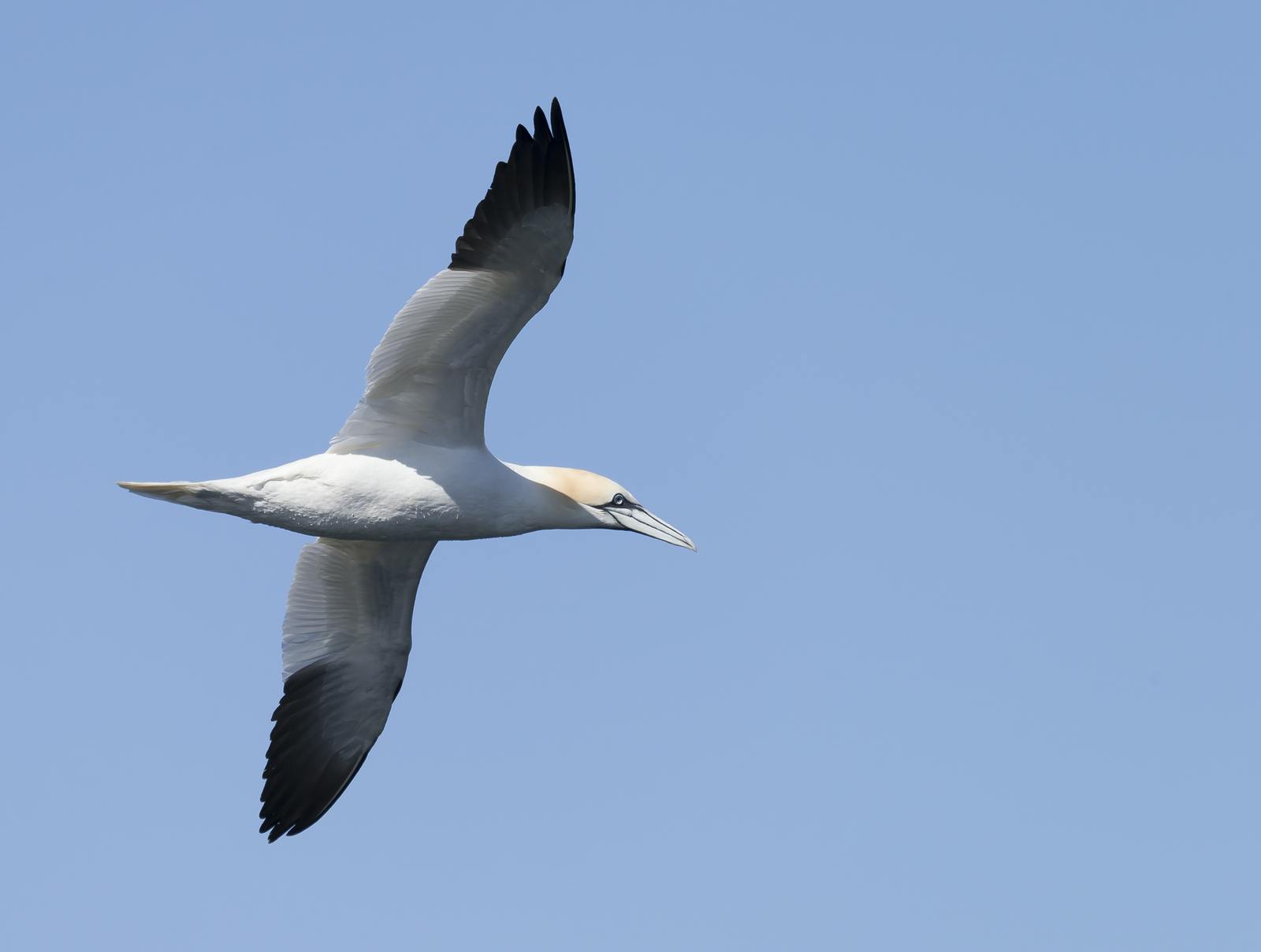
The Northern Gannet
A big majestic bird glides over the sea until it darts into the ocean to catch a fish. The big splash and chaos that follows when the bird disappears into the sea is a sight that no one forgets. This bird is the northern gannet (Morus bassanus), which has earned the nickname "Queen of the sea" for its beauty and elegance.
The gannet belongs to the order Suliformes, which is the oldest living order of birds. The main characteristic of Suliformes is having a web between all four toes. In Iceland, the great cormorant (Phalacrocorax carbo) and the common shag (Phalacrocorax aristotelis) also belong to this order.

Learn More About Icelandic Wildlife
Embark on a thrilling journey to uncover the enchanting secrets of Icelandic nature and wildlife at Reykjavík's Perlan Museum. Explore a world of exciting activities that allow you to dive into the wonders of Iceland. Designed for everyone, this unique experience brings together the beauty and nature of Iceland in one fantastic place at the Perlan Museum. Discover more about the exhibitions at Perlan here.
Characteristics Of the Northern Gannet
The gannet is a large bird, about 90-100cm (35.4-39.4in) long and weighing as much as 3 kg (6lbs). A mature bird is white with black wingtips, black feet and a yellowish head. The eyes and bill are blue-grey. The chicks are dark brown, but their feathers turn brighter as they mature until they get the white plumage of a full-grown bird at the age of four.
Their wings are large and strong, with a wingspan of 180-200 cm (6-6.6ft), which helps the gannet forage long distances. This very wide wingspan is useful for the gannet as the bird is known to fly a few hundred kilometres between its nest and feeding areas. The gannet spends most of its life far out at sea but migrates to the nesting grounds in April.

Nesting Habits
At the beginning of May, the gannet starts egg-laying on steep cliffs and on rocky islands. Gannets mate for life, and when they unite at the nesting site, they are very affectionate towards their companions. The nest is a heap of seaweed and other stuff from their surroundings glued together with the gannets' droppings. The gannet lays a single egg, and the parents take turns to incubate it for 44 days.
Unlike other birds, gannets warm their eggs with their webbed feet as well as their belly. The young are born featherless, blind and quite unpleasant to look at. They are very dependent on their parents for the first days or until they get some down and feathers to keep them warm. The parents hunt fish, which they puke half-digested in their chicks' mouths, which is one of the characteristics of Suliformes. The gannets' menu consists of the most abundant pelagic fish species at each time and place, such as sand eels, herring, mackerel, and cod.

The Gannet Population
The gannet population in Iceland is about 37,000 breeding pairs. About half of the population breeds in Eldey island, which is one of the world's largest gannet colonies. The Icelandic gannet also breeds in Súlnasker in the Westman islands, Skoruvík at Langanes, at Skrúður in the east and at Rauðanúpur at Melrakkaslétta. The most important breeding areas for gannets are a few very large ones in the United Kingdom.
The world's largest gannet colony is on the Bass Rock Island in Scotland, with over 75,000 breeding pairs. There are also large colonies in Labrador and Newfoundland, with tens of thousands of breeding pairs in steep rocky cliffs. The gannet leaves its nesting area in the fall and roams the ocean during winter. Icelandic gannets spend most of wintertime in Western Europe but have been spotted all the way south in West Africa.

The Fishing Method
The fishing method of the gannet is called "Súlukast" in Icelandic, which translates to "Gannet plunge". The bird then darts at great speed straight into the ocean, from 40 metres above (130ft), to catch a fish. Large flocks of gannets often follow shoals of herring, capelin, and mackerel. When fishermen see "súlukast", they can be pretty sure that they are at the right fishing spot. Whales also follow shoals of fish, so people often see gannets when they go on whale-watching tours.
Back in the day, gannet chicks were hunted for meat and feathers while they were still flightless. The hunting method was called "súlnafar", which is the same method people used when hunting the cormorant, a related common shag. A group of hunters would surround a gannet colony and creep up to the nests. There, they clubbed the chicks with bats. This hunting method, which can barely be called hunting, is only history, and the Icelandic gannet is now protected by law.

Five Facts Worth Diving Into
- The gannets' fishing method is called "Súlukast" in Icelandic, which translates to "Gannet plunge". The bird then darts into the ocean to catch a fish.
- The gannet can dive at least 24 metres (80 ft) into the ocean.
- The average recorded flight of gannets between the breeding area and feeding area in Scotland was 232 km (144 mi) but the longest flight was over 500 km (310 mi).
- Gannets use their webbed feet to warm their eggs.
- The gannets' nostrils are inside of the bill to prevent water from entering their nose when they dive.







